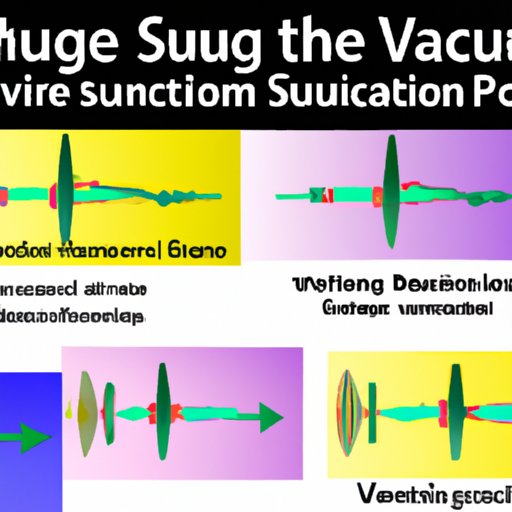Introduction
Sound waves are vibrations in the air that transmit energy from one place to another. They are produced by vibrating objects, such as musical instruments, speakers, and even the human voice. Sound waves travel in all directions and can be heard when they reach our ears. But what other materials can sound waves travel through? In this article, we will explore the different media through which sound waves can travel, investigate how sound transfers through water, air, and solid objects, compare the effects of sound waves on various materials, and understand the principles behind sound wave propagation.

Exploring the Different Media Through Which Sound Waves Can Travel
Sound waves can travel through various mediums, including air, water, and solid objects. Air is a compressible medium, meaning it can be compressed and expanded easily. This makes it an ideal medium for sound waves to travel through. Water is also compressible, and sound waves can travel faster through it than they can through air. Solid objects, such as walls, provide a hard surface through which sound waves can reflect and refract, creating different types of echoes.
Investigating How Sound Transfers Through Water, Air, and Solid Objects
When sound waves travel through a medium, they can interact with the material in several ways. The three primary ways by which sound waves can transfer through a medium are reflection, refraction, and diffraction. Reflection occurs when sound waves bounce off a surface and return to their original direction. Refraction occurs when sound waves bend as they pass through a medium with varying densities. Diffraction occurs when sound waves bend around obstacles or edges.

Comparing the Effects of Sound Waves on Various Materials
When sound waves travel through a medium, they can affect the material in different ways. Absorption is the process by which sound waves lose energy as they pass through a medium. Resonance is the amplification of sound waves due to the material’s natural frequency. Different materials absorb and reflect sound differently, so the effects of sound waves vary depending on the material.

Understanding the Principles Behind Sound Wave Propagation
The principles behind sound wave propagation include frequency, amplitude, and the speed of sound. Frequency refers to the number of times a sound wave oscillates within a given time period. Amplitude is the intensity of the sound wave, or the amount of energy it carries. The speed of sound refers to how quickly it travels through a medium. These factors determine how sound waves interact with materials and how far they can travel.
Examining the Science Behind How Sound Travels Through Different Substances
Different substances can either conduct or insulate sound waves. Conductors are materials that allow sound waves to pass through them easily, while insulators impede the passage of sound waves. Metals, liquids, and some plastics are good conductors of sound, while wood and glass are good insulators. Understanding how different substances conduct and insulate sound can help us create better soundproofing methods.
Analyzing the Impact of Sound Waves on the Environment
Sound waves can have a significant impact on the environment. Noise pollution is a major problem in many cities and can cause hearing loss, stress, and other health problems. Additionally, sound waves can disrupt the behavior of wildlife, such as birds and marine mammals, by interfering with their communication and navigation.
Conclusion
In conclusion, sound waves can travel through various mediums, including air, water, and solid objects. As sound waves travel through these mediums, they can interact with the material in different ways, such as reflection, refraction, and diffraction. Different materials absorb and reflect sound differently, and the principles behind sound wave propagation, such as frequency, amplitude, and the speed of sound, determine how sound waves interact with materials and how far they can travel. Finally, sound waves can have a significant impact on the environment, such as noise pollution and disruption of wildlife behaviors.
(Note: Is this article not meeting your expectations? Do you have knowledge or insights to share? Unlock new opportunities and expand your reach by joining our authors team. Click Registration to join us and share your expertise with our readers.)
